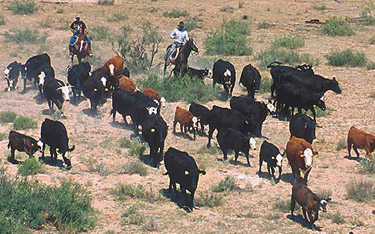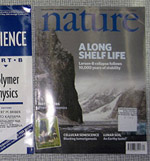Designing better conservation easements for land management
 Agriculture,
Agriculture,  Preservation
Preservation  A new study looks at 52 conservation easements created by The Nature Conservancy (TNC) in California rangelands from 1973 - 2006 to see how the approach of this land protection strategy has evolved over time.
A new study looks at 52 conservation easements created by The Nature Conservancy (TNC) in California rangelands from 1973 - 2006 to see how the approach of this land protection strategy has evolved over time.
Specifically, the study in the journal Rangeland Ecology and Management focuses on the challenge of incorporating adaptive management into a legal document that sets restrictions on land use in perpetuity.
As the largest conservation organization in the world, The Nature Conservancy was one of the earliest groups to start acquiring conservation easements from willing landowners.
So the evolving language used in their easements over the last 3 decades reflects the growing complexity in these documents over time to try and address the central challenges in the approach.
The study, by Adena Rissman, will likely be valuable to other land conservation groups to see what easement terms have been developed and tried out by TNC over the years.
In addition to reviewing easement language, Rissman also interviewed TNC staff from these easement projects to better understand the rationale behind the terms and to get their feedback on what worked and what didn't.
Early easements protected land by simply restricting incompatible uses such as development and mining. Rissman shows that, over the years, in an effort to better protect biodiversity in perpetuity, TNC has been creating easements with language that puts some controls on agricultural management of the property - e.g limits on grazing intensity, the types and numbers of livestock used, etc.
From my experience, landowners selling or donating easements often have problems with this because they want flexibility in their capacity to earn an agricultural living from their property.
Rissman focuses on another central problem with trying to set permanent restrictions on how the property is managed. According to the concept of adaptive management - i.e. a basic tenet of conservation and agriculture - land stewardship practices should be modified over time in response to changes in science and on-the-ground conditions.
Rissman's research shows that TNC has been developing language in their easements to address this issue. On the one hand TNC has taken the approach of incorporating flexibility in easement language.
For example, as an alternative to hardwiring restrictions on management into the easement document, some easements have required a management plan to be developed later that includes those details.
However, as Rissman learned from TNC confidants, this can create its own problems. She writes, " Staff felt some issues were ‘‘punted’’ to an incomplete management plan to allow the deal to be closed, and they were frustrated with still negotiating those issues years later."
Another approach utilized by TNC has been to negotiate easement language that grants them affirmative rights to take their own management actions on the property if necessary - e.g. the right to conduct weed control, restoration, grazing if the landowner discontinues the practice, etc.
These approaches are positive developments in crafting better conservation easements. However, as Rissman writes, "Despite innovations in flexibility for land management, the paradox of perpetual restrictions for adaptive management remains."
--Reviewed by Rob Goldstein
Rissman, A. (2010). Designing Perpetual Conservation Agreements for Land Management Rangeland Ecology & Management, 63 (2), 167-175 DOI: 10.2111/08-251.1Rissman, A. (2010).




Reader Comments